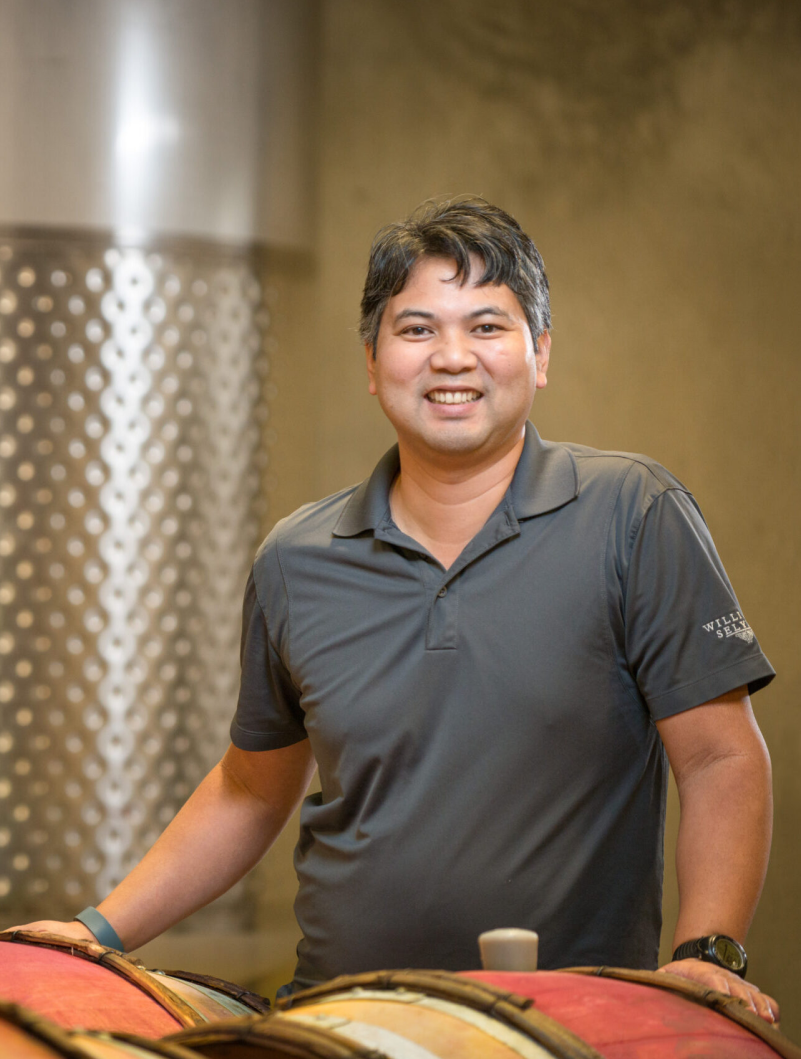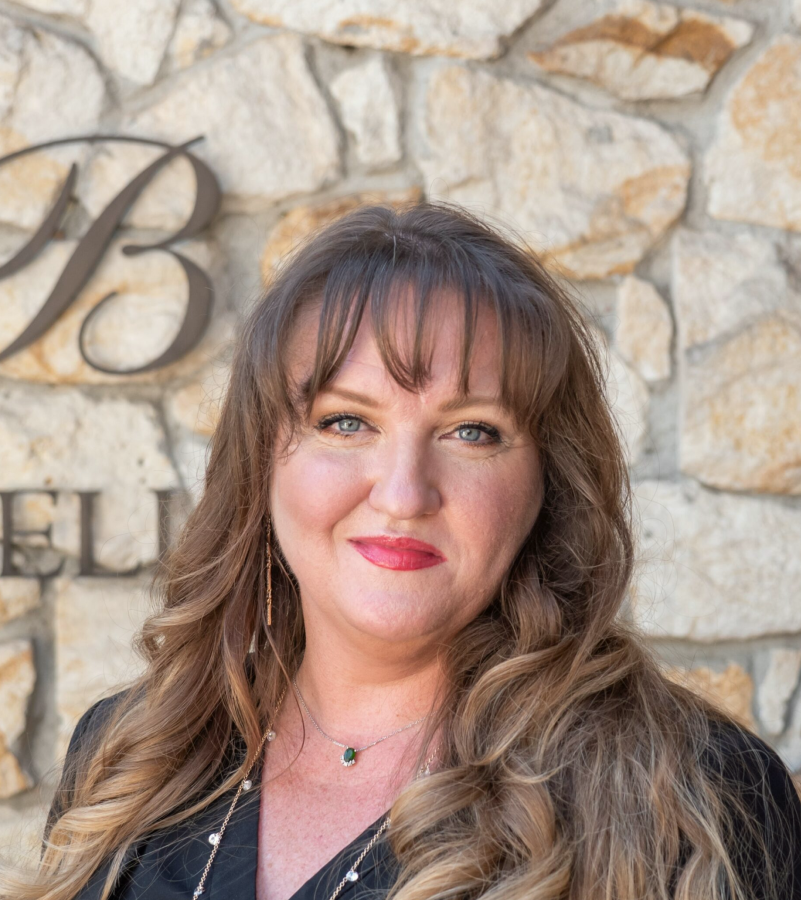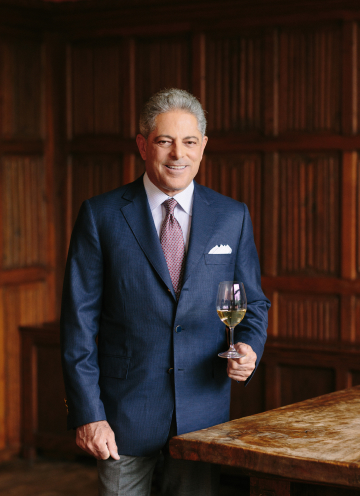"We are a family-owned boutique winery that puts everything into making sure that the wine is very high quality and well-balanced.”
Will you perhaps start by giving us a brief introduction to where the winery stands today?
I came on board here in 2011, worked under the previous winemaker, Bob Cabral, for a couple of years, and officially took control of the winemaking process and vineyards in 2014. So I have a lot of experience here with the vineyards. It’s kind of an exciting time in California because a lot of the vineyards are quite mature, and what I mean by that is many of the vineyards that we work with are over 20 years old.
So, our wine-growing region has a long history from a Pinot Noir perspective, which is mostly what we focus on a lot of those vineyards. While we have some very old vineyards that are 40, 50 years old, Pinot Noir, the bulk of what we do is in that real kind of sweet spot from a vine age perspective. So, it’s quite an exciting time to be making wine in the Russian River Valley because of that consistency.
Vine age creates consistency from year to year. You kind of outgrown the adolescent phase where you’re still kind of finding yourself. Even as a young adult, you know, you’re sort of finding out who you are, and I think once you hit that sort of 20-year mark, you’re full-on into sort of maturity. So, it’s an exciting time to be making wine in the Russian River Valley.
As you mentioned, you are very well known for your Pinot Noir and for the fact that it’s handcrafted. Will you tell us a little bit more about your production methods?
Yes, our production methods are quite unique. It’s a traditional method of making wine. Let’s start there. Even though we’re distinctly Californian, we take a lot of old-school, old-world techniques from Burgundy. So, especially in Pinot Noir winemaking, it’s about using whole clusters, so the whole bunches in the fermentation process.
We use the traditional sort of what’s called in French pigeage, which is foot treading. We actually do a lot of foot treading on the grapes, focusing on high-quality vineyard sites. Very simple winemaking. Our tanks are quite unique in that we use repurposed, beautiful stainless steel dairy tanks. So if I might use, maybe just even like my water glass. So like this would be a typical sort of wine fermentation tank. It’s upright and cylindrical. Our tanks are unique because they’re horizontal. But if you can kind of imagine cutting the tank in half, and then think of it as like a trough. So these are old school 1950s, 1940s. stainless steel vats that have been repurposed to make wine.
And so the little bit of the history of it is a lot of these dairy tanks were quite common in the dairy industry in our area in Sonoma County. When the original owners, Burt Williams and Ed Selyem, the two names on the label, decided to start their winery in the seventies, they didn’t have a lot of money. And so they saw a lot of these dairy tanks that were available to use, and they thought to themselves, well, they’re beautiful, stainless steel tanks. They’re virtually were very inexpensive.
So, starting out in a winery situation, where you know the cost can be very high, they repurposed these tanks to make wine. And what’s really fascinating, and I know I’m spending a lot of time on this, but it’s really important, from a qualitative perspective and an identity perspective of our wine, is that even if you can imagine holding your water bottle up, right? That’s half full of water, right? And you can see there’s a slice, the section that sort of interacts with the grapes and the juice. There’s a certain surface area. But if you turn that water bottle on its side, you’ve created a ratio, a different ratio of skin to juice. Does that sort of make sense?
It does make sense.
And it’s that ratio of turning everything on its side that allows us to do the foot treading but also creates a better surface area because all the good things and grapes are in the skins. So, if you have a better ratio of skin-to-juice contact, you get a better extraction. And so if you ever have the opportunity to taste one of our wines and compare it to a traditional method in terms of that upright open-top tank, the texture is very different. So I think that’s a unique character of our wine.
So it’s quite unusual the way that we make the wine. So these beautiful, stainless steel, horizontal, open-top tanks, we can send you a picture of it, if that’s of interest. So you can kind of like fully understand. But taking great vineyards, great grapes, this very unique method of extraction, if you will, taking old-world techniques of whole clusters.
And you know what’s also very unique about our wines is we don’t use any pumps. Everything is done by gravity. So Pinot Noir is kind of unique in that it doesn’t like to be manipulated in a way. So, even pumping can create undue force and pressure on the wines that can change the complexion.
So, from an ultimate, gentle perspective, the foot treading, a lot of the handwork, as all the grapes are picked by hand, and so, all those things together really create a unique textural experience with our wines, which are quite regarded and beloved by our customers. And so, that’s what the long answer is, in a way. But I think it’s the uniqueness of what we do and the specialness of how we make the wines that really make a unique product in the world.
Thank you very much for that. And yeah, it was a really good explanation.
Yeah, just along those lines. Reuse, reduce and repurpose, so that sort of these concepts. And so they did that in the beginning. So, even to this day, I look for old 1950s dairy tanks that are still in good shape to purchase, and they still exist in the world. There are fewer and fewer, so from like a wine fermentation tank perspective, I’ve not had to purchase a brand new tank. I’m always looking for these older tanks to repurpose.
Interestingly enough, too, I mean, our glass—and this is not going to be a really representative case—but our bottle is quite simple. And it’s funny because the glass itself is quite light. This is what the original winemakers have always wanted. They always said that it’s what’s in the bottle that makes the wine. It’s the quality of the product inside. So they never spent money on really heavy glass. This has been the mantra of what we’ve done forever.
And our winery, 1981 was our first commercial vintage, so over 40 years. We don’t really talk about that as much. I mean, it’s just what we’ve always done—repurpose dairy tanks and the lightest glass possible. These are all buzzwords today, but we’ve been doing it forever, which is sort of interesting.
I can definitely tell it’s part of the identity. And I would like to ask you as well: Would you like to mention anything about the Chardonnays and Zinfandel that you also have?
Yes, so the Chardonnays, we’re primarily known for our Pinot Noirs, but the original winemakers, Burt Williams and Ed Selyem, also made a little bit of Chardonnay and Pinot Noir. This area is also quite well known for growing, and actually, I think the original fame, in my opinion, there was a lot of great Chardonnay that was produced in the Russian River Valley. So it’s part of the landscape of our region.
Of course, we make a little bit of Chardonnay, and the same for Zinfandel. The history of Zinfandel is quite unique in that the Italian immigrants, when this area was settled in the mid-1800s, a lot of the Italian immigrants had planted Zinfandel. So a lot of these vineyards, and we happen to own a 120-year-old vineyard with plants that were planted in the 1890s, and they’re still producing. So again, from a landscape perspective, it’s part of our community right in Sonoma County. That’s why we choose to make some of those wines and also because they’re part of our landscape.
From a winemaking perspective, Chardonnay, again, is very simple—hand-picked grapes and very gentle techniques. Whether it’s Pinot Noir, Chardonnay, or Zinfandel, our real purpose in producing a wine is to highlight the unique personality of the vineyard site. So we do specialize in vineyard designate wines. We do have a few wines that are blended together, but we really believe our techniques are the gentleness with which we make all of our wines highlights the unique personality of the individual vineyard sites.
So we’re not trying to change what the wine’s going to taste like. We really want the vineyard to be the most expressive. And so all of our techniques are geared towards expressing the sense of place the best, and that extends into our Chardonnays. Interestingly enough, the Zinfandels are made in the same way that the Pinot Noirs with those horizontal open-top dairy tanks.
So, from a textural perspective, I don’t know if you’ve tasted many Zinfandels, but you know they can be quite tannic and extracted. But again, sort of this gentle technique that we have highlights the old vineyard sites. But they are quite elegant in their mouth feel and style. So it’s also quite a unique application of our techniques to a variety that is traditionally known as very concentrated and rich. I mean, our wines are actually very concentrated but extracted. So, it is a unique method.
I have one more question for you. What would be the key message that you would like to convey about Williams Selyem?
Oh, a key message. Wow! Our wines really represent where they come from, and I think we work very hard to work with really great vineyards. The style of the wine has not changed over the last 44 vintages. Stylistically, our wines have been very consistent across those vintages. It’s because we work with great vineyards. We have really modest techniques in which we practice. I feel like our wines are truly representative of where they come from, and that’s the ultimate sort of goal for a winemaker. I think a great house is to truly represent where the wines come from.
I think our little twist in all this is that we have very unique methods. So you know those dairy tanks, I feel like our wines have a signature style, but they really represent where they come from, and I think that’s a hallmark of a great house. Consistency from vintage to vintage, working with great grapes, that whole concept in a world of trends. And we’ve been really consistent in what we’ve produced, how we’ve produced it, and what the wines represent. As a winemaker, I’m very proud of that tradition, but also that ability that whatever the vintage we produce, the best that could have been produced that year from that particular vineyard. Our sense of consistency is bar none, in my opinion.



















